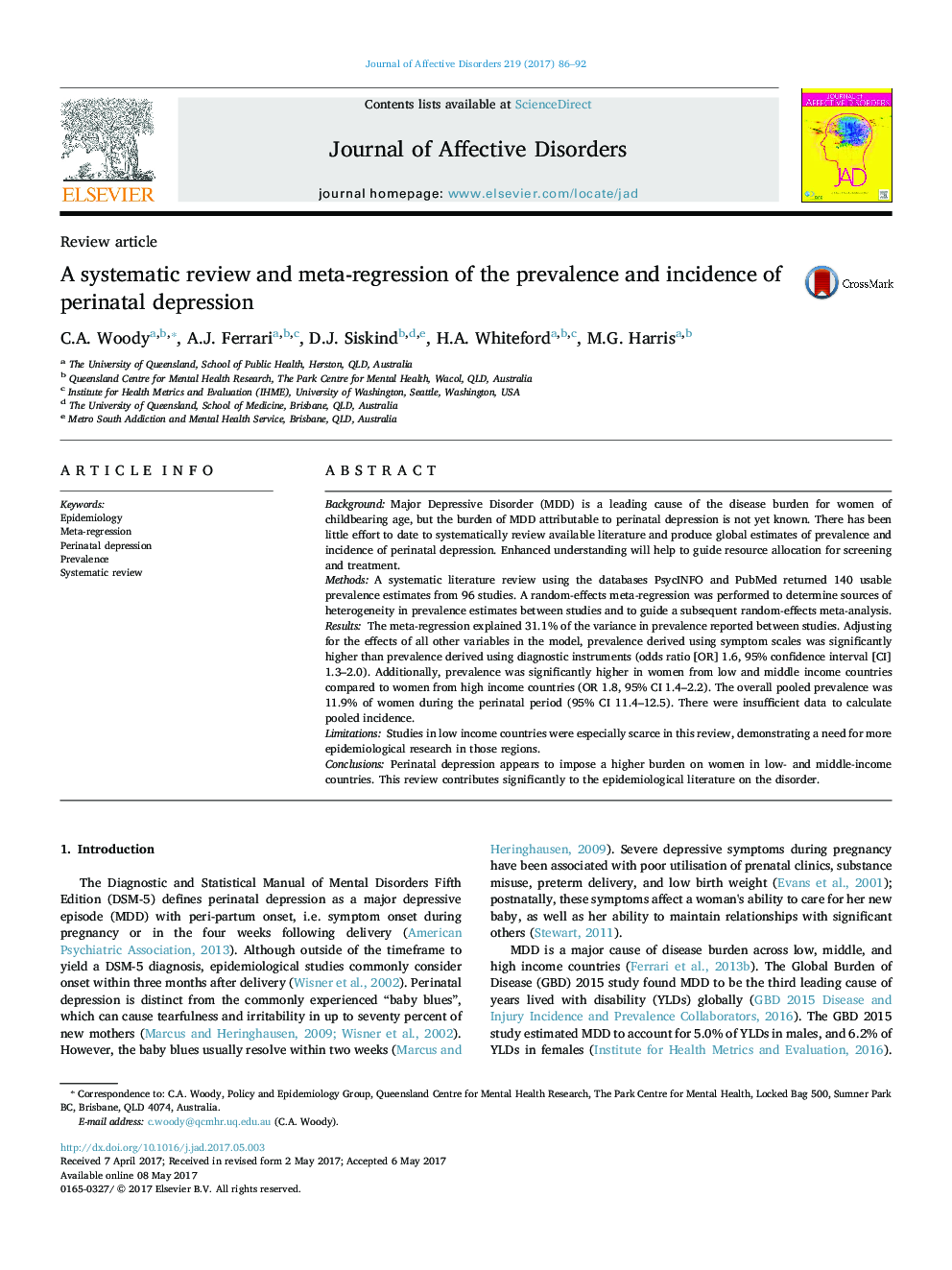| Article ID | Journal | Published Year | Pages | File Type |
|---|---|---|---|---|
| 5721878 | Journal of Affective Disorders | 2017 | 7 Pages |
â¢There are few global estimates of perinatal depression prevalence and incidence.â¢We estimate the overall adjusted pooled prevalence of perinatal depression is 11.9%.â¢Women in lower income countries may face a higher burden of perinatal depression.
BackgroundMajor Depressive Disorder (MDD) is a leading cause of the disease burden for women of childbearing age, but the burden of MDD attributable to perinatal depression is not yet known. There has been little effort to date to systematically review available literature and produce global estimates of prevalence and incidence of perinatal depression. Enhanced understanding will help to guide resource allocation for screening and treatment.MethodsA systematic literature review using the databases PsycINFO and PubMed returned 140 usable prevalence estimates from 96 studies. A random-effects meta-regression was performed to determine sources of heterogeneity in prevalence estimates between studies and to guide a subsequent random-effects meta-analysis.ResultsThe meta-regression explained 31.1% of the variance in prevalence reported between studies. Adjusting for the effects of all other variables in the model, prevalence derived using symptom scales was significantly higher than prevalence derived using diagnostic instruments (odds ratio [OR] 1.6, 95% confidence interval [CI] 1.3-2.0). Additionally, prevalence was significantly higher in women from low and middle income countries compared to women from high income countries (OR 1.8, 95% CI 1.4-2.2). The overall pooled prevalence was 11.9% of women during the perinatal period (95% CI 11.4-12.5). There were insufficient data to calculate pooled incidence.LimitationsStudies in low income countries were especially scarce in this review, demonstrating a need for more epidemiological research in those regions.ConclusionsPerinatal depression appears to impose a higher burden on women in low- and middle-income countries. This review contributes significantly to the epidemiological literature on the disorder.
